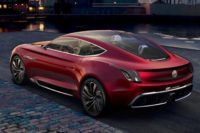“In the past, lightweighting, or purposely designing more lightweight cars specifically for fuel efficiency, has been a key tool for improving the fuel economy of internal combustion engine (ICE) vehicles,” says Anthony Schiavo, senior analyst at Lux. “However, the transition from ICEs to battery electric vehicles (BEVs) changes both the goals and the design considerations around lightweighting.
“BEVs are overwhelmingly more efficient than ICE vehicles, due to regenerative braking and more efficient motors, and are increasingly outgrowing the issue of limited range,” claims Schiavo. He predicts that battery pack energy densities will increase by roughly 15 percent over the next decade. “This increased energy density can be used to either extend the range of a vehicle by keeping battery size the same or reduce cost by shrinking the size of the battery pack,” he points out.
Schiavo and his colleagues calculated a lightweighting benchmark. They determined that in order for lightweighting to be a cost-effective solution against batteries by 2030, it will need to cost, on average, less than $5 per kilogram of weight saved.
“This benchmark is not the only thing guiding lightweighting decisions,” warns Schiavo. “To find adoption, materials companies and manufacturers will need to find solutions that save on both weight and cost.
“We predict vehicle structure will be an opportunity for high-strength steel and aluminum, as they provide weight reductions at minimal cost,” adds Schiavo. “Bumpers are expected to benefit from design advancements that utilize glass fiber, carbon fiber and thermoplastics.
“BEVs have a fundamentally different architecture than ICE vehicles, with large battery packs as the dominant feature rather than a large engine bay,” explains Schiavo. “The need to secure a large, heavy battery pack at the bottom of the vehicle and the desire to use one platform for multiple vehicles will drive the automotive industry back into a body-on-frame arrangement for BEVs.
“This body-on-frame structure favors high-strength steels and aluminums as the primary structural elements, as the extra weight of these metals (relative to composites) will mostly be at the bottom of the vehicle, where it will have a minimal impact on performance,” Schiavo points out. “Moreover, there’s a wealth of expertise in forming high-strength frames from the trucking space, making this approach highly cost effective. Composite structural lightweighting will be limited to luxury vehicles.
“Other material priorities, such as sustainability, durability and end-of-life issues, however, will take priority over lightweighting by 2030,” says Schiavo. “There’s far more risk of disruption from improving energy storage technologies—which could substantially outstrip forecast improvements by 2030—than there is from novel innovations in materials.”



